Outdoor recreation
Type of resources
Topics
Keywords
Contact for the resource
Provided by
Formats
Representation types
Update frequencies
status
-
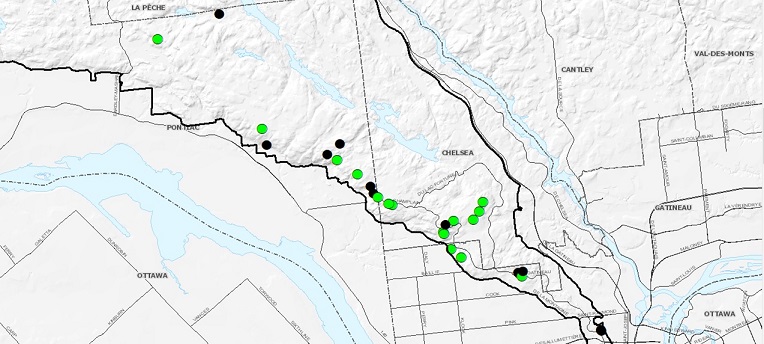
Locations of scenic points already existing and potential in the Gatineau Park borders.
-
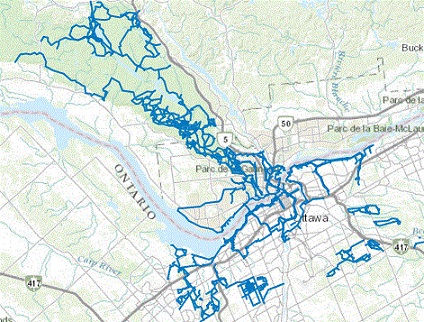
Lines representing where recreational pathways, trails, parkways, and forest roads owned and/or maintained by the NCC are located.
-
Delimited area of the Greenbelt as of 2013.
-
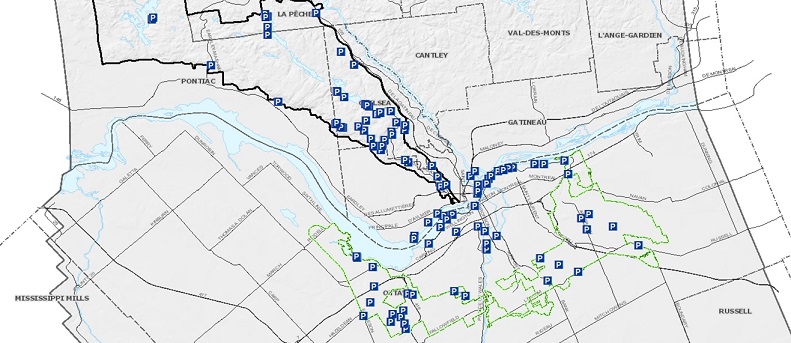
Point representing each of the parking lots under the maintenance and management of the NCC.
-
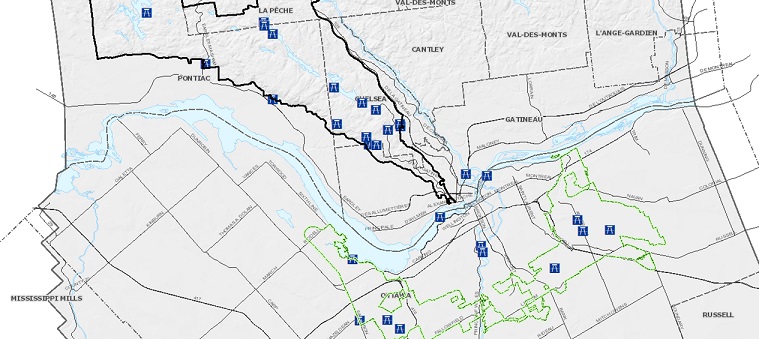
Identification of the NCC's public picnic areas. Picnic tables present, some larger locations have shelters. https://ncc-ccn.gc.ca/places/picnicking https://ncc-ccn.gc.ca/places/picnicking-greenbelt
-
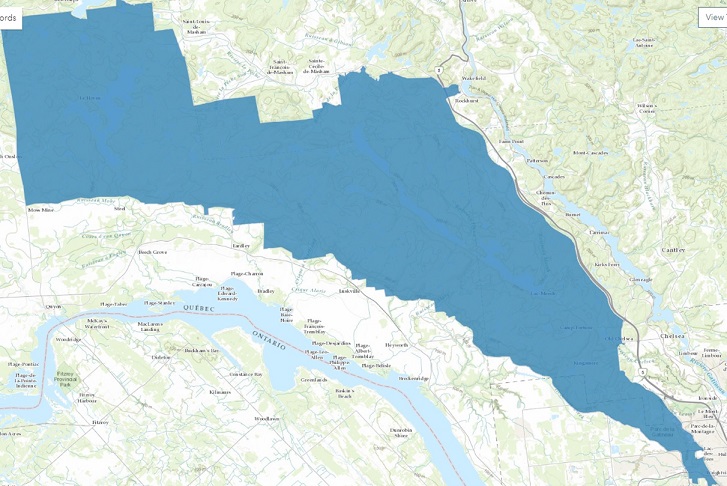
Delimited area of the Gatineau Park as of 2021.
-
Description: Data on recreational boating are needed for marine spatial planning initiatives in British Columbia (BC). Vessel traffic data are typically obtained by analyzing automatic identification system (AIS) vessel tracking data, but recreational vessels are often omitted or underrepresented in AIS data because they are not required to carry AIS tracking devices. Transport Canada’s National Aerial Surveillance Program (NASP) conducted aerial surveys to collect information on recreational vessels along several sections of the BC coast between 2018 and 2022. Recreational vessel sightings were modeled against predictor variables (e.g., distance to shore, water depth, distance to, and density of marinas) to predict the number of recreational vessels along coastal waters of BC. The files included here are: --A Geodatabase (‘Recreational_Boating_Data_Model’), which includes: (1) recreational vessel sightings data collected by NASP in BC and used in the recreational vessel traffic model (‘Recreational_Vessels_PointData_BC’); (2) aerial survey effort (or number of aerial surveys) raster dataset (‘surveyeffort’); and (3) a vector grid dataset (2.5 km resolution) containing the predicted number of recreational vessels per cell and predictor variables (‘Recreational_Boating_Model_Results_BC). --Scripts folder which includes R Markdown file with R code to run the modelling analysis (‘Recreational_Boating_Model_R_Script’) and data used to run the code. Methods: Data on recreational vessels were collected by NASP during planned aerial surveys along pre-determined routes along the BC coast from 2018 to 2022. Data on non-AIS recreational vessels were collected using video cameras onboard the aircraft, and data on AIS recreational vessels using an AIS receiver also onboard the aircraft. Recreational boating predictors explored were: water depth, distance to shore, distance to marinas, density of marinas, latitude, and longitude. Recreational vessel traffic models were fitted using Generalized Linear Models (GLM) R packages and libraries used here include: AED (Roman Lustrik, 2021) and MASS (Venables, W. N., Ripley, 2002), pscl package (Zeileis, Kleiber, and Jackman, 2008) for zeroinfl() and hurdle() function. Final model was selected based on the Akaike’s information criterion (AIC) and the Bayes’ information criterion (BIC). An R Markdown file with code use to run this analysis is included in the data package in a folder called Script. Spatial Predictive Model: The selected model, ZINB, consist of two parts: one with a binomial process that predicts the probability of encountering a recreational vessel, and a second part that predicts the number of recreational vessels via a count model. The closer to shore and to marinas, and the higher the density of marinas, the higher the predicted number of recreational vessels. The probability of encountering recreational vessels is driven by water depth and distance to shore. For more information on methodology, consult metadata pdf available with the Open Data record. References: Serra-Sogas, N. et al. 2021. Using aerial surveys to fill gaps in AIS vessel traffic data to inform threat assessments, vessel management and planning. Marine Policy 133: 104765. https://doi.org/10.1016/j.marpol.2021.104765 Data Sources: Recreational vessel sightings and survey effort: Data collected by NASP and analyzed by Norma Serra to extract vessel information and survey effort (more information on how this data was analyzed see SerraSogas et al, 2021). Bathymetry data for the whole BC coast and only waters within the Canadian EEZ was provided by DFO – Science (Selina Agbayani). The data layer was presented as a raster file of 100 meters resolution. Coastline dataset used to estimate distance to shore and to clip grid was provided by DFO – Science (Selina Agbayani), created by David Williams and Yuriko Hashimoto (DFO – Oceans). Marinas dataset was provided by DFO – Science (Selina Agbayani), created by Josie Iacarella (DFO – Science). This dataset includes large and medium size marinas and fishing lodges. The data can be downloaded from here: Floating Structures in the Pacific Northwest - Open Government Portal (https://open.canada.ca/data/en/dataset/049770ef-6cb3-44ee-afc8-5d77d6200a12) Uncertainties: Model results are based on recreational vessels sighted by NASP and their related predictor variables and not always might reflect real-world vessel distributions. Any biases caused by the opportunistic nature of the NASP surveys were minimized by using survey effort as an offset variable.
-
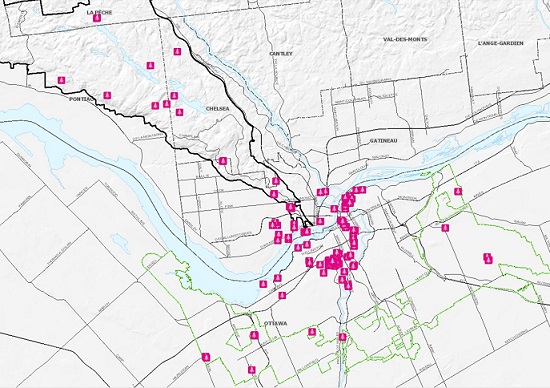
In celebration of the tremendous diversity of tree species that tell the story of our culture and history, the NCC released in September 2020 a compilation of close to 170 remarkable trees across Canada’s Capital region entitled A Living Legacy: Remarkable Trees of Canada’s Capital. An interactive map and downloadable book are available for free on the NCC’s website and will allow the public to discover distinctive features of these trees, revealing a story of the beauty of our natural heritage through the rich diversity of species thriving within Canada’s Capital. This compilation features trees according to their commonalities, which can include their physical relationship with the land, the fact that they were a source of food for Indigenous peoples, or for their contribution to the forest industry. https://ncc-ccn.gc.ca/remarkable-trees https://ncc-ccn.maps.arcgis.com/apps/MapJournal/index.html?appid=a9ba98fb7e8b4c2ba9be337235b95291
 Arctic SDI catalogue
Arctic SDI catalogue